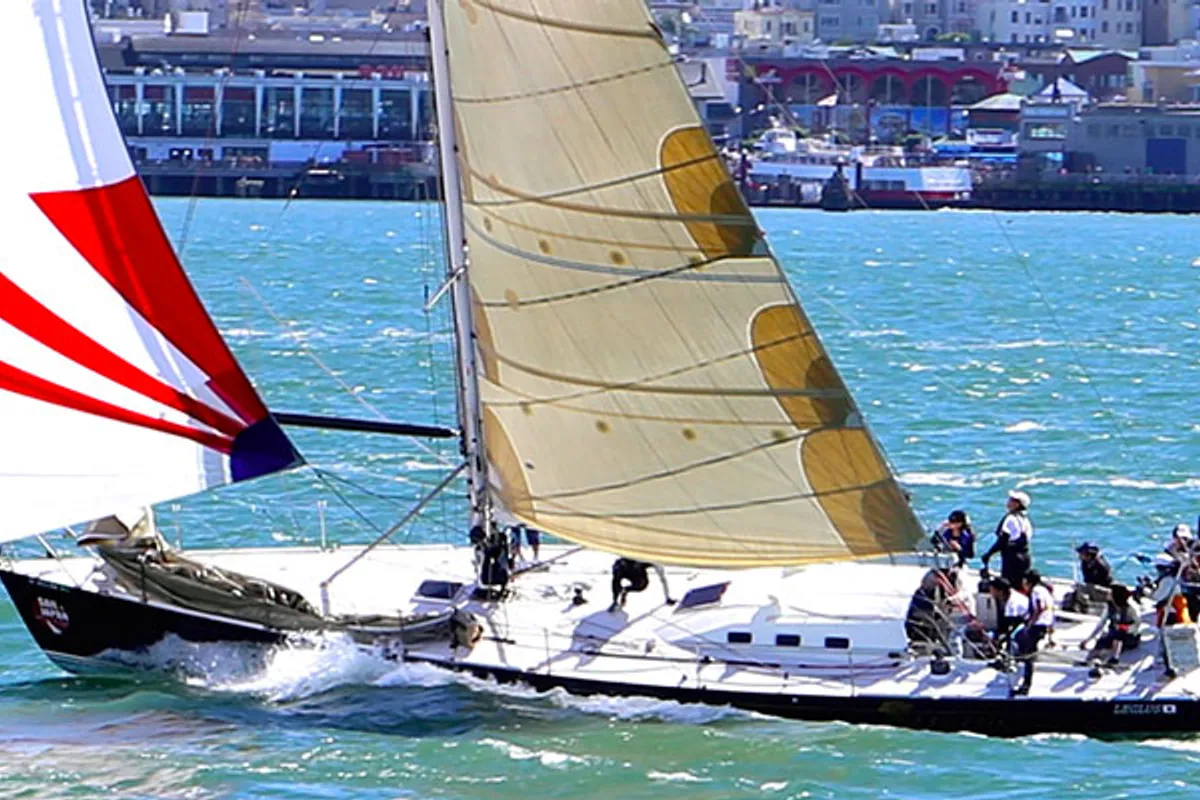HISTORIC OFFSHORE YACHT MARKS 40TH ENTRY IN THE 2023 TRANSPAC
Leglus continues strong Hawaiian tradition in the race
Solomon Ka’ne’s Leglus, a 1986-built Ohashi 52, is the 40th entry to next year’s 52nd edition of the 2225-mile Los Angeles-Honolulu Transpac Race. Leglus is among a diverse fleet of boats currently entered that range in size from 33 to 100 fleet long and hail from all over the US, Canada and Australia. The fleet is expected to grow even larger until the final entry deadline is reached on May 26th, 2023.
Besides hitting the 40th entry milestone for the race, Ka’ne is also one of the first entries from Hawaii for this edition of the race and is looking forward to representing his native state. “Ocean sailing is part of my heritage as a Hawaiian,” said Ka’ne, “and I’m honored to represent this in the race. I’m ready to push myself and my team in this effort.”
While most of the entries in the long history of this race have been from the mainland, the Hawaiian heritage to Transpac runs deep – in fact from the very beginning of this race first sailed in 1906. The idea for the race was actually proposed ten years earlier when Hawaii’s King David Kalakaua extended an invitation to the Pacific Yacht Club in San Francisco to have a race to Hawaii to help celebrate his 50th birthday.
No additional action was taken until shortly after Hawaii became a US Territory in 1898, when Honolulu businessman and yachtsman Clarence Macfarlane discussed creating such a race with Los Angeles businessman and South Coast YC member Harry Sinclair. Macfarlane agreed to sail his 48-foot schooner La Paloma to San Francisco, as much to show other yachtsmen it could be done as to meet them there for the start of a race back to Honolulu.
Unfortunately, Macfarlane sailed into San Francisco Bay on May 13, 1906 just 25 days after that city had been devastated by the great earthquake and fire. Still, he somehow managed to contact Sinclair and they agreed that Macfarlane should sail down to Los Angeles where they could organize a race to Honolulu from there.
At Noon on June 11, 1906 off the San Pedro breakwater Macfarlane’s La Paloma was joined by Sinclair’s 86-foot Lurline (shown above) and Charles Tutt’s 112-foot ketch Anemone from the New York YC to start the race to Honolulu. Anemone was the scratch boat under an earlier agreed upon handicap system and had to give Lurline and La Paloma 12 and 27 hours respectively.
Twelve days, 9 hours, and 59 minutes after the start, on a passage so fast it was only eclipsed once in the next four decades, Lurline crossed the finish line off Oahu to become Transpac’s first elapsed- and corrected-time winner.
Leglus follows in these Pacific ocean racing traditions. She was designed by Van De Stadt and built in Japan in 1986 for her double-handed entry in the following year’s inaugural Melbourne Osaka Cup. This arduous 5500-mile race – like TPYC’s LA-Tahiti Race – is one of the world’s very few longitudinal ocean races (course shown to the right). Leglus also competed in the 1991 and 1995 editions of this race before being relocated to San Francisco by her Japanese owner Norikazu Hatsukano and entering in her first Transpac in 2009.
With his purchase of Leglus in December 2021 in San Francisco, Ka’ne has opened a new chapter in the ocean racing heritage of this yacht with preparations starting earlier this year for him to enter his first Transpac in this boat. Refitting began with an engine replacement and other work, and some sailing in San Francisco Bay to learn the boat and its systems.
“She is tiller-driven yet really well-balanced,” said Ka’ne. “I did some double-handed sailing around the Bay with the previous owner, and this was a lot of work for me in sail handling, but I look forward to having a strong team of 8 to 10 crew to help in the Transpac.”
Some of that crew Ka’ne hopes will include some of his 5 brothers who grew up with him sailing as kids, but he admits will need to catch up on their sailing skills. “I hope they will be able to be part of this team,” he said. The balance of the Leglus team he expects will be among his mainland-based crew.
After a delivering Leglus south to San Diego, the plan for Ka’ne and his team is to participate in the Baja Ha-Ha Cruiser’s Rally to Cabo San Lucas to earn even more sea miles on the boat – Transpac rules require each entry’s crew to have sailed together on a long race or passage prior to starting the race. So after arriving in Cabo Ka’ne plans to return to either San Diego or Ensenada to do more boat yard work, including a haul out, repainting and rig inspection in making further preparations for the race to Honolulu.
“We’re busy but excited,” said Ka’ne. “This will be a big effort, but we hope worth it when we make the start, the journey and the finish at Diamond Head!”
“The 40th entry mark is important for us,” said Transpac YC commodore Tom Trujillo. “It establishes a hinge point in our timeline where we know the committed interest is strong and we will have a successful race for all who participate in this 52nd edition: the owners, sailors, sponsors and spectators.”
Click here for more on the 52nd biennial edition and other information about the Transpac
